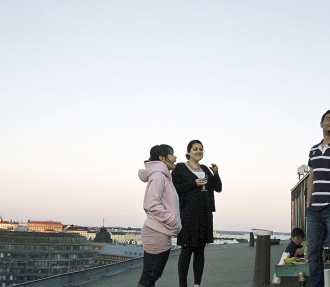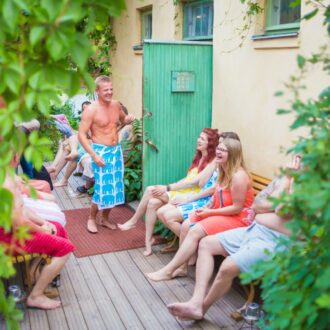In Finland, a range of community colleges called Työväenopisto assist students with coming to terms with the 15 different noun cases of the local lingo, among many other educational things.
Available for all residents nationwide, there is truly something for everyone at their local Työväenopisto, with course subjects encompassing everything from art history to fitness and numerous languages.
“Our courses are aimed at people outside of the labour market, pensioners, people with small children and also those who are working and want to take evening classes,” states Eero Julkunen, Vice-Principal of Helsinki’s Työväenopisto.
Newcomers to Finland are increasingly proving themselves perfectly capable of communicating in the local language, and integrating themselves completely into Finnish society, thanks in no small part to the range of language courses available in institutions such as Työväenopisto.
“We have around 50 different Finnish language courses, but there are also cooking and IT classes on offer specifically for foreigners,” Julkinen explains.
Altogether, students have backgrounds in around 80 different languages.
“It’s always interesting with many different cultures in the classroom,” explains course-planning coordinator Sylvi Lankinen. “It’s a pleasant experience.”
Internationally speaking

Ukrainian Valentina Paliichuk enjoys the multicultural environment of her classroom. Photo: Emilia Kangasluoma
“My classmates are from many countries,” explains Finnish-language student Valentina Paliichuk, originally from Ukraine. “There are people from Spain, Italy, Ecuador, Russia, Estonia and many others. Everyone has a story from their country and traditions that we speak about in class.”
Also in the same class, Indonesian Abdurrahman Tauhid appreciates the importance of communicating in the local language, having arrived in Finland eight months ago to live with his girlfriend.
“Most people here speak English, but you really need to speak Finnish to get a job,” he observes. “Finnish is a hard language, but I want to learn it and live here. Everything is possible, as long as you believe in yourself.”
Aside from acquiring a job here in their chosen profession, students at Työväenopisto have different motives for learning the language.
“I started to learn Finnish as I have a baby here,” explains Spaniard Julio Ortiz. “I want to help when he eventually goes to school and starts to do his homework.”

Italian Paolo Bucciarelli recently decided to learn Finnish, hoping to feel more a part of the community here. Photo: Emilia Kangasluoma
However, for some, their motivation is not a matter of the necessity of work or family commitments. After living here on and off for nearly seven years, Italian music producer Paolo Bucciarelli recently decided that the time is right to try his hand at the local language.
“There comes a point that if you want to be a part of the community you need to speak it,” he explains. “Especially as the old generation doesn’t really speak English.”
Given the wide array of choices for studying Finnish on offer at a variety of institutions, why would he then choose Työväenopisto?
“A friend of mine studied Italian here and recommended it, as he received good tuition and it is quite cheap. I thought, ‘okay, let’s give it a try’. The best way is to just jump in and stay afloat. I am taking it in a philosophical way: at least at the end of this course I will know more than when I started.”
Linguistic safety net

Aside from Finnish language, courses at Työväenopisto community colleges encompass a diverse range of subjects. Photo: Emilia Kangasluoma
Nowadays, one doesn’t actually need to participate in a classroom discussion in order to learn Finnish. While a quick Google search reveals a number of different avenues online, one of the most popular has been that of Kesäyliopisto (summer university).
“I started giving courses online three years ago,” explains Anne Palokangas, lecturer at the Summer University of Northern Ostrobothnia. “Many people who are living in smaller villages can’t find courses because if there are not enough foreigners living nearby, then courses won’t be organised in that area. Also some people have difficulty leaving home as they have babies, so they can also participate. Sometimes we have cats and dogs and babies crying in the classroom.”
With students scattered around the country, as well as such far flung regions as the USA, Russia and Asia, the convenience of the Internet is certainly put to good use.
“It’s so easy to come to class when it’s online,” Palokangas exclaims. “I never know where people are. They could be next door, on their way home from work, or in Brazil, Italy or Spain.”
By James O’Sullivan, September 2013









